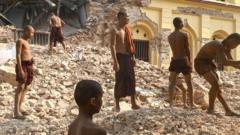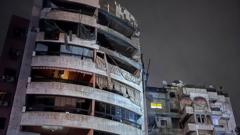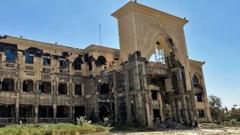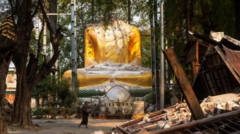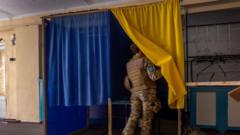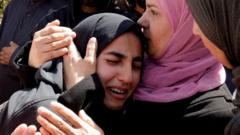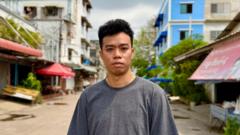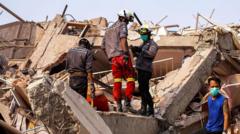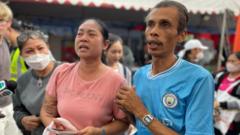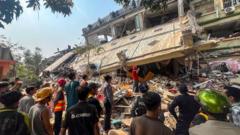The recent 7.7-magnitude earthquake in Myanmar has left over 2,000 dead and many trapped, while local and international aid efforts face military roadblocks.
Earthquake Devastates Myanmar: Humanitarian Access Hampered

Earthquake Devastates Myanmar: Humanitarian Access Hampered
Rescue efforts hindered in Sagaing as Myanmar military restricts volunteers
As rescue operations unfold in the aftermath of a catastrophic 7.7-magnitude earthquake that struck Myanmar's Sagaing region, profound challenges continue to impede assistance. The quake, noted as the country's worst in over a century, has resulted in a staggering death toll of around 2,056, with additional injuries exceeding 3,900, as confirmed by the military government.
Sagaing's roughly 300,000 inhabitants desperately awaited aid for three days following the disaster, which obliterated homes and religious structures, complicating ongoing military conflicts that have long isolated the area. Residents lamented that they were largely left to navigate the crisis alone, especially given the military's prior internet shutdowns as part of its civil war measures against rebel forces.
International aid groups began making their way to the devastated region, yet local volunteers wishing to join search and rescue efforts reported military obstructions. “Rescue operations can only proceed with their consent,” lamented U Tin Shwe, a local resident obstructed from reaching a collapsed monastery where monks remained trapped.
Although attention has been directed toward larger cities like Mandalay and Naypyidaw, where many military leaders reside, social media appeals from Sagaing's citizens urged foreign governments to direct aid specifically to their stricken region—the epicenter of the earthquake—where an estimated 80% of the town lies in ruins. Furthermore, early evaluations conducted by the U.S. Geological Survey indicate that the death toll could regretfully exceed 10,000.
Sagaing's roughly 300,000 inhabitants desperately awaited aid for three days following the disaster, which obliterated homes and religious structures, complicating ongoing military conflicts that have long isolated the area. Residents lamented that they were largely left to navigate the crisis alone, especially given the military's prior internet shutdowns as part of its civil war measures against rebel forces.
International aid groups began making their way to the devastated region, yet local volunteers wishing to join search and rescue efforts reported military obstructions. “Rescue operations can only proceed with their consent,” lamented U Tin Shwe, a local resident obstructed from reaching a collapsed monastery where monks remained trapped.
Although attention has been directed toward larger cities like Mandalay and Naypyidaw, where many military leaders reside, social media appeals from Sagaing's citizens urged foreign governments to direct aid specifically to their stricken region—the epicenter of the earthquake—where an estimated 80% of the town lies in ruins. Furthermore, early evaluations conducted by the U.S. Geological Survey indicate that the death toll could regretfully exceed 10,000.

